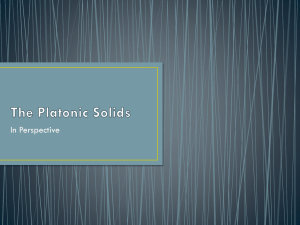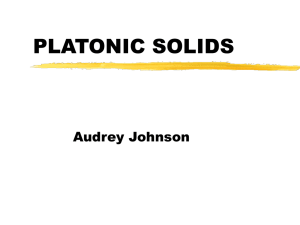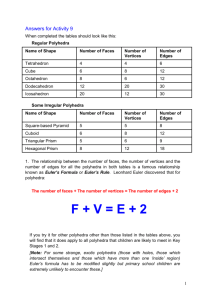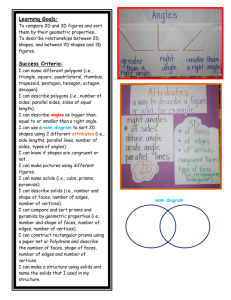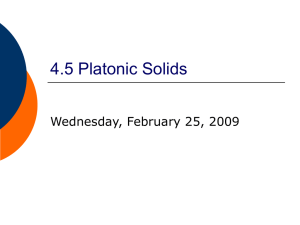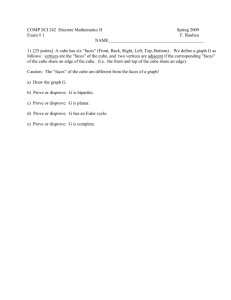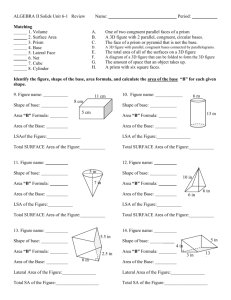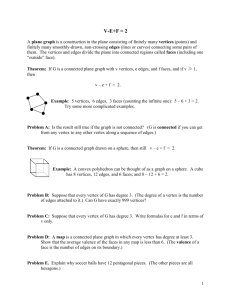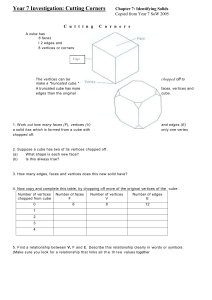5. Platonic Solids - Center for Science, Mathematics & Computer
advertisement
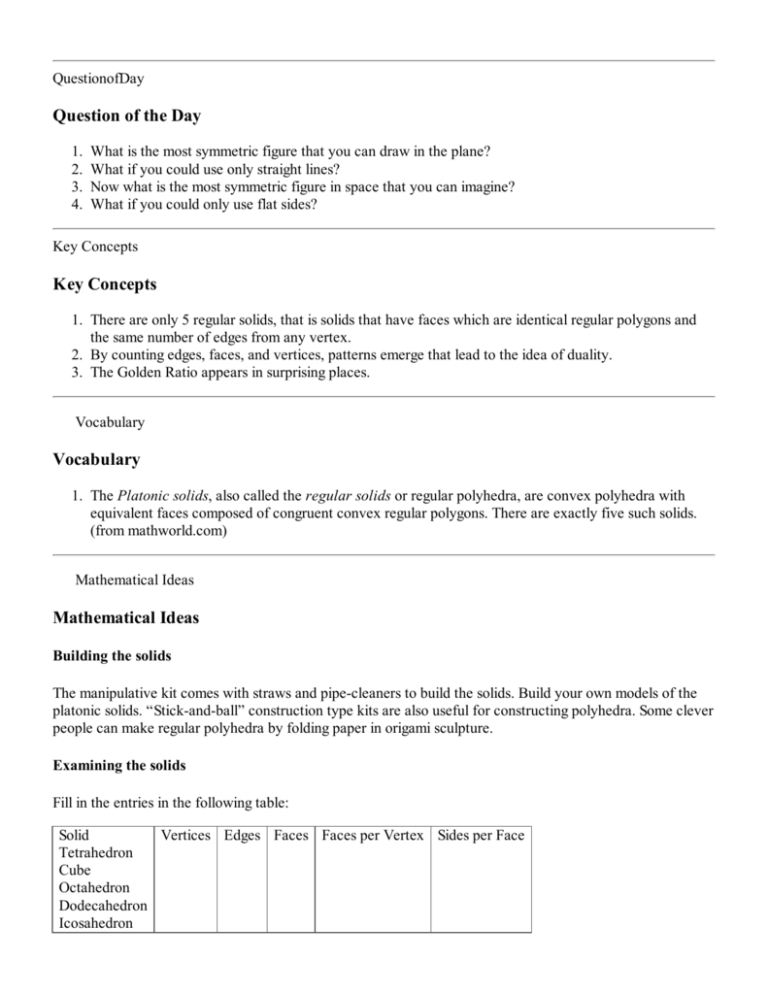
QuestionofDay Question of the Day 1. 2. 3. 4. What is the most symmetric figure that you can draw in the plane? What if you could use only straight lines? Now what is the most symmetric figure in space that you can imagine? What if you could only use flat sides? Key Concepts Key Concepts 1. There are only 5 regular solids, that is solids that have faces which are identical regular polygons and the same number of edges from any vertex. 2. By counting edges, faces, and vertices, patterns emerge that lead to the idea of duality. 3. The Golden Ratio appears in surprising places. Vocabulary Vocabulary 1. The Platonic solids, also called the regular solids or regular polyhedra, are convex polyhedra with equivalent faces composed of congruent convex regular polygons. There are exactly five such solids. (from mathworld.com) Mathematical Ideas Mathematical Ideas Building the solids The manipulative kit comes with straws and pipe-cleaners to build the solids. Build your own models of the platonic solids. “Stick-and-ball” construction type kits are also useful for constructing polyhedra. Some clever people can make regular polyhedra by folding paper in origami sculpture. Examining the solids Fill in the entries in the following table: Solid Vertices Edges Faces Faces per Vertex Sides per Face Tetrahedron Cube Octahedron Dodecahedron Icosahedron Are there relationships among the values in the table? For instance, why should the number of vertices times the number of edges per vertex be twice the number of edges? (We will encounter this kind of reasoning again in Session C on Counting.) Are there “reciprocal” or “complementary” relationships among the number of vertices and the number of faces between different rows in the table? Duality Visualize yourself inside a cube (for instance a roughly cubical room like a classroom). Put a vertex in the center of each face, and then connect the vertices with edges. What do you get? What happens if you do the same with a tetrahedron. This section is adapted from: Instructor Resources and Adjunct Guide for the second edition of The Heart of Mathematics by E. Burger, M. Starbird, and D. Bergstrand. Sample Worked Problems Page 286, Problem 15, Siding on the cube Suppose that we start with the edges of a cube (that is, its skeleton.) Now on each square face, we glue four triangles together to make a pyramid on each face. Sketch a drawing of this figure. Count he number of its vertices, edges and faces. The number of vertices is 8 + 6 = 14. The number of edges is 12 + 4 * 6 = 35. The number of faces is 6 * 4 = 24. Notice that V - +F = 14 - 36 + 24 = 2. Page 286, Problem 17, Dual quads Suppose you have a cube with edge length 1. Suppose you construct an octahedron inside it whose vertices are in the centers of the faces of the cubes. How long are the edges of that octahedron? Consider the centers of the four sides of the cube, on what might be called the “equator” of the cube. These four centers form a square, which will be the “equator” of the small dual octahedron formed inside. The diagonal of this square (from center of a cube face to the center of the cube face opposite) has length one, and creates a 45-45-90 right triangle. The edge length of the triangle, by the Pythagorean Theorem is . That is the edge length of the octahedron. Page 287, Problem 21, Truncated solids Slice off all the vertices of each of the regular solids to produce new solids that have two different types of sides. Fill in the chart by counting or computing the number of vertices, edges, and faces each solid now has. Also describe how many faces of each type the truncated solid has. Solid Vertices Edges Faces V - E + F Tetrahedron 12 18 8 2 Cube 24 36 14 2 Octahedron 24 36 14 2 Dodecahedron 60 90 32 2 Icosahedron 60 90 32 2 Problems to Work for Understanding 1. Solidifying Ideas: pages 284-285, 3,11,12,13,14, 2. New Ideas: page 286, 18, 19 3. Habits of Mind: page 286, 22 Last modified:
